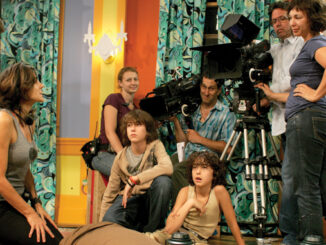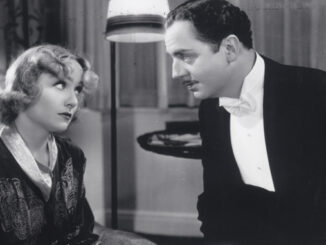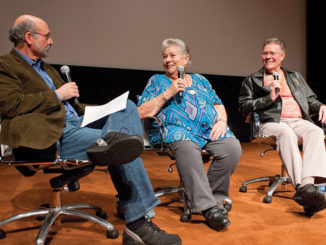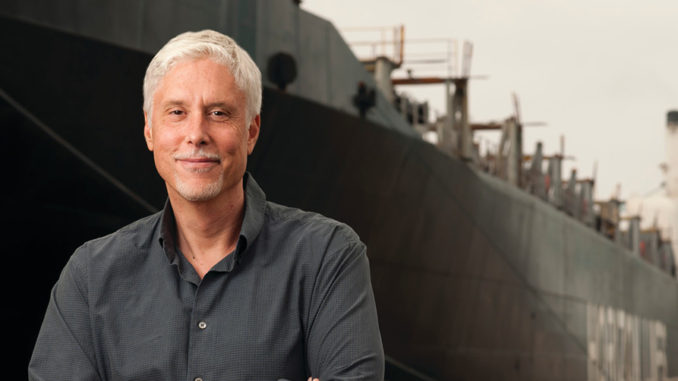
by Rob Feld • portraits by Martin Cohen
Film flows deeply through the blood of editor Christopher Rouse, A.C.E., as a third-generation participant in the industry. “My grandfather was an assistant director, and my father was a writer-director; I like to think some of him runs through me because I’ve always been drawn to editing — the process where you write with the film,” says Rouse. He started making films in junior high school, his first being a comedic portrayal of gym class, cut to the main title theme of Patton (1970).
After high school, he worked as a PA for his father on a film that was never completed, but stole every chance he could to watch and learn from two editors, Bud Isaacs and Bernie Balmuth. Isaacs helped Rouse get into the union and took him on as an apprentice on a TV movie, Raid on Entebbe (1976), where he met another mentor, Janice Hampton, whom he credits with teaching him a great deal about “the practical methods and political dynamics of editing.”
After traveling and spending some time at UCLA, Rouse worked as an assistant on a variety of TV shows until he landed a first assistant editor gig on a Hal Ashby film, Lookin’ to Get Out (1982). “That was a crazy project, but as far as my editorial education was concerned, I’d lucked out, landing with two of the greats in Hal and editor Bobby Jones. The lessons I learned from them were invaluable, deepening my understanding about things like performance — especially with improvisational material — as well as dramatic arcs and the use of music. I’ve had many other mentors throughout the years; all of them have helped me profoundly.”
Rouse has since found a comfortable home, cutting for directors like F. Gary Gray, John Woo and, in his most prolific collaboration, Paul Greengrass. His latest effort with the latter, Captain Phillips, opened in mid-October through Columbia Pictures. It adapts the true story of the hijacking by Somali pirates of the Maersk Alabama in 2009. After his cargo ship is taken by the pirates, Captain Richard Phillips (Tom Hanks) is kidnapped by them and put on a small, enclosed lifeboat to await his fate. The suspense is kept high between very few, frequently close-quartered locations, a different sort of challenge for an action film but perhaps one not dissimilar to their work together on United 93 (2006).
After several highly successful films together, there is definitely a chemistry between Greengrass and Rouse (who also co-produced Captain Phillips), which CineMontage decided to explore upon the release of their latest collaboration.
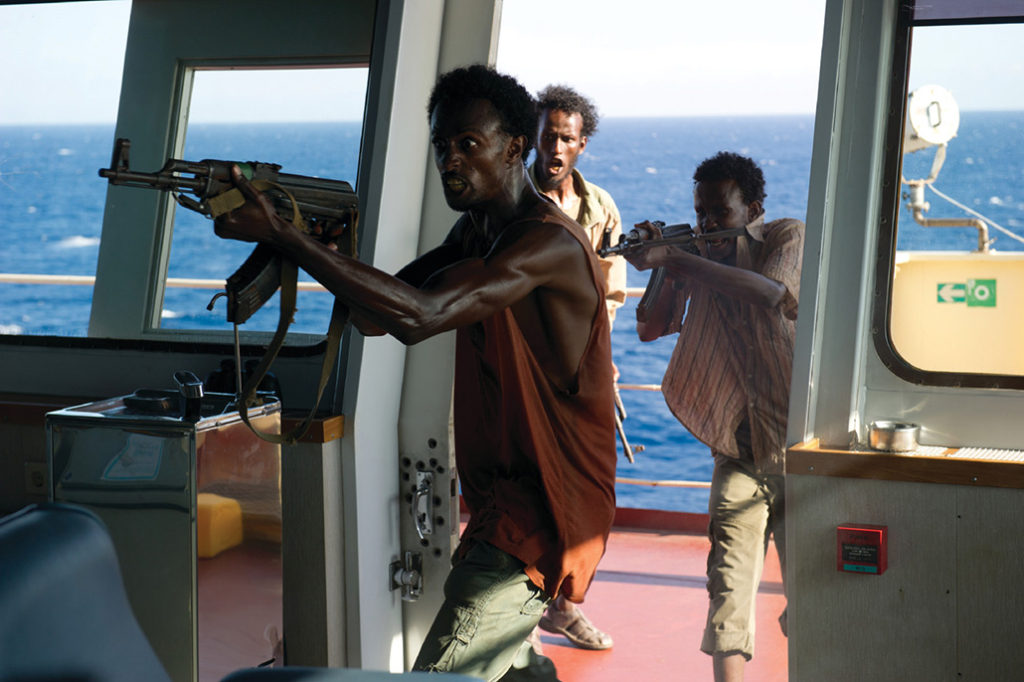
Columbia Pictures
CineMontage: Your relationship with Paul Greengrass is known to be a particularly close one. Can you tell me how you work together?
Christopher Rouse: With Paul, I have the good fortune to work with someone who is not only supremely talented, but is a great friend as well. We share many of the same views of life and the world, which makes our collaborations extremely fulfilling and, importantly, tends to lock us into common creative goals quickly. Like any close relationship, ours is based upon trust, so we’re extremely open and honest when we speak with each other.
Paul and I are in touch constantly, so I’m aware when he’s first drawn to a project. During his vetting process, he likes to use me as a sounding board when he’s deciding on and then refining his vision for a piece. One of his great attributes as a filmmaker is his ability to drive to the root of a story to see what its potential is thematically. The early conversations we have about them — and about how to best explore those issues through story and character — inform choices I make months later in the cutting room.
CM: When do you typically start on a project with him?
CR: Paul “officially” brings me into his process quite early; for example, I was hired on Captain Phillips about six months before shooting began. I work closely with him as he hones the script with the writer [Billy Ray], giving feedback and making suggestions. We analyze everything, probing to see if the script is serving plot, character and theme fully. We go over the set pieces thoroughly, first on page and then with animatics, tracking characters and structural builds to see if they’re delivering story as well as excitement.
Paul keeps me updated during his casting process, explaining the rationale for his choices, which gives me insight into his actors’ performances later on. He and I also discuss the look and feel he imagines for the film, and how best to support that editorially.
CM: What sort of shorthand have you two developed?
CR: Our shorthand develops naturally out of our process. By the time I start cutting, I’m thoroughly immersed in the piece, so my editorial decisions are usually intuitive. After production has wrapped, Paul and I watch the cut together and speak at length about it. I’ll then go off to make changes. We’ll get together again, watch and repeat that process.
CM: Talk about the specific craft of Captain Phillips. What was its great challenge and how did you think about maintaining a sense of geography and tracking the action between locations?
CR: Like any film, Captain Phillips had many challenges, but I was blessed to be working with great artists across the board: Paul, our writer Billy Ray, Tom Hanks and the rest of the actors, our cameraman Barry Ackroyd and our entire post-production team, including my brilliant friend [additional editor] Mark Fitzgerald, to name a few. As far as geography, it was important to try to maintain a clear sense of it throughout, particularly in order to define and develop dramatic stakes for the characters, such as when the pirates are trying to board the Alabama or when the SEALS are trying to calibrate the rescue of Phillips. As you might imagine, shooting at sea is incredibly difficult and forces logistical compromises, but Paul’s material was so compelling that I think I was able to get away with a few geographical cheats along the way.

CM: Did you wind up deviating at all from the script?
CR: As the script evolved, we got a pretty strong sense of when we should be with the drama in the lifeboat and when it made sense to keep alive the other forces coming to bear upon it. In the end, we manipulated the order of the lifeboat material a little, but for the most part it wound up structurally as it was on page.
As far as the tension in the lifeboat, when you’ve got four desperate young men holding your protagonist hostage while the overwhelming power of the US Navy is en route, you’ve got a pretty stressful situation built in. Also, the lifeboat’s cramped quarters and relentless sound added great environmental pressure to the scenes. In addition to carefully choosing performances, I was very conscious of choices of shot size and rhythms in trying to amplify the tension further. As in the rest of the film, it was important to track the progression of the drama in the lifeboat, to define the dynamic changes between the characters, and to keep the conflicts as strong and clear as possible.
CM: What other challenges did you find in editing the scenes with Phillips as a hostage?
CR: It was also important to keep Phillips at the center of the film and as active as possible, which wasn’t always easy since he was a hostage pinned in his seat for much of the time. Throughout the film, I tried to clock where he was emotionally, what he was experiencing, and how that motivated his actions. But perhaps the biggest challenge I had was to make sure I was getting the most out of our story and characters, while attending to the energy and tension of the piece. When you’ve got an accelerated motor going editorially, the danger is that depth and complexity can be lost in pursuit of excitement. I tried to keep the nuances of story and character alive no matter what the pace.
CM: What sort of footage do you get from Greengrass — lots of coverage or highly storyboarded shots that dictate the cuts?
CR: Paul likes to pre-visualize his action sequences to address them more efficiently. As with the evolution of the script, I’m very involved with that process, and the hope is to get a strong construct that may not be exact, but is fundamentally working dramatically. As far as dialogue-driven scenes, Paul doesn’t cement them beforehand. On the contrary, because of his documentary background and his great gift of working improvisationally with actors, he likes to keep the set loose and the scene, as he describes it, “biddable” by the actors on that day — subject to what they may bring to a situation.
Sometimes a scene will arrive in the cutting room as it was written, sometimes it will have little relation to what was on the page. It depends upon what “truths” Paul and the actors discovered as they were shooting. Paul likes to roll long takes, often returning back to the first position several times during the same take and going at it repeatedly, prompting the actors to explore more deeply. As the coverage evolves and discoveries are made by him and the actors, the dialogue or blocking of a scene may change over the course of the day.

CM: How do you deal with that as an editor?
CR: I have to keep myself as free and flexible as possible. And I have to stay open to the same types of dramatic discoveries that occur on set. Paul is an incredibly generous artist and he gives me a tremendous amount of freedom, encouraging me to do whatever I think is best with a scene right off the bat. I send cuts to him as he’s shooting, and he’s less interested in seeing a scripted version of a scene than a version that I think works better. He has described what he and I do as “playing jazz,” and I think that’s pretty apt.
CM: How do you approach cutting with Greengrass’ constantly moving camera?
CR: Paul’s style of moving the camera gives his material a sense of raw emotion and immediacy. It creates tension, gives great dynamics to action sequences, and also supports the way he works with his actors. It helpshis material feel unconsidered and real; situations are “caught” rather than constructed.
Because Paul’s dailies often consist of shots that move radically within a take, move differently from take to take or perhaps change materially between takes, I break them down into discrete sequences before I begin cutting. Those sequences might contain all the material from a given character divided into beats, or cutaways and reactions, or material subdivided and re-organized for an action scene. I then annotate those sequences, dropping locators on readings I might like, or shots I’d like to use.
CM: How does that help you deal with all those varying takes?
CR: I don’t have any hard and fast rules about it, but despite the fact that it does take more time, this process helps me in several ways. First, I get the material better organized and more easily accessible to me, not only for my first pass, but for every pass thereafter. I also have time to think about the scene while I’m re-organizing, and will begin cutting it in my head — or sometimes by actually grabbing and putting pieces together as I organize. By the time I get to editing the scene, I often have a pretty good idea of where I want to go with it.
CM: How does that compare to working with footage from, say, John Woo?
CR: John’s style is much smoother and more orchestrated than Paul’s. His camera movements can feel quite choreographed, in a very thoughtful and beautiful way. He often suspends moments to heighten the drama, extending them unrealistically so we have a chance to experience and absorb an event more fully before returning to real time.
In the end, I look at any type of camera movement as another rhythmic element in the scene, and try to feel and shape it from cut to cut as I would the rhythms of dialogue, for example. Whether I’m working with Paul, John or anyone else, I try to inhabit their material and let it speak to me.
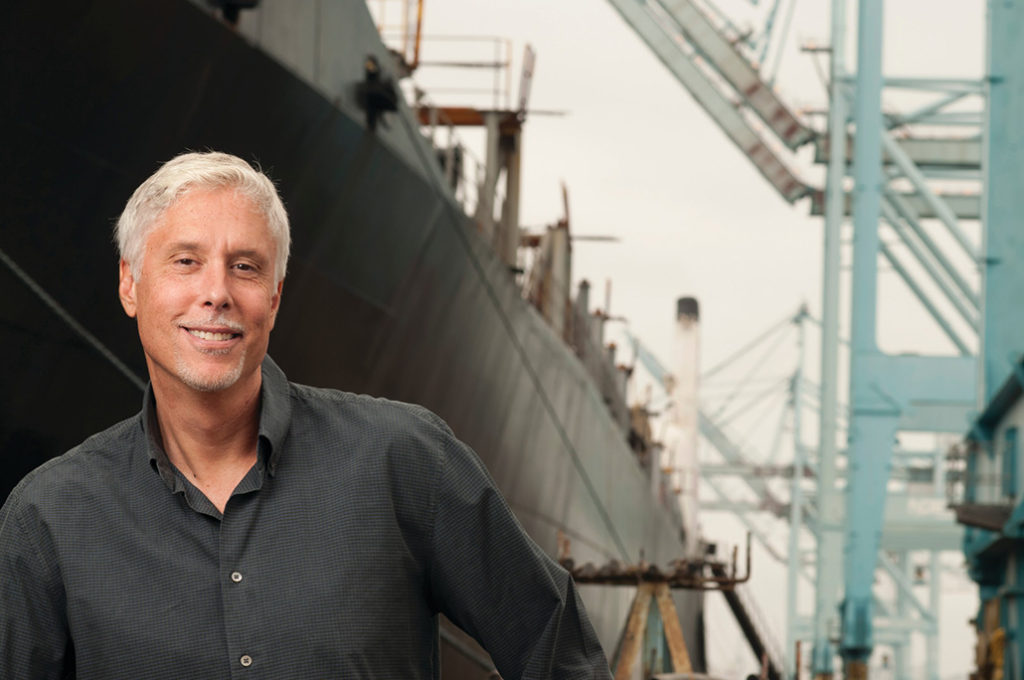
CM: F. Gary Gray has also been a repeat collaborator of yours. You do a great deal of action work; is there a relationship you can find between that and comedy?
CR: I should preface this answer by saying that on those two films of Gary’s where I was asked in, I worked with the material of two fantastic editors: Richard Francis-Bruce and Shelly Kahn. And most of the comedic editorial work on those films was theirs, so I don’t want to misrepresent what was done.
That said, I think there is a definite connection between cutting action and comedy in that they’re both about setup and payoff. In order to deliver a moment with a guy trying to race a car through a crowded intersection, you’ve got to set up the obstacle, see him negotiate it and then pay it off. With a joke, you need to frame a situation, set up for either a verbal or non-verbal punch line and then deliver it. In either case, finding the most effective moments, shots and rhythms are key to maximizing the effect of the payoff.
CM: What is the meaning of action as a storytelling device? How do you bring character into it, or not lose character within it?
CR: The term “action” is pretty broad, but it comes down to something happening. It can be something as simple as a character walking out a door or a car getting a flat tire. Or it can be a complex chain of events that are the result of many smaller actions. But whatever it is, action in a piece should in some way relate to questions about story, character and theme. Like: “What just happened? How will this affect everything else? What is the character doing? What is he or she after? What’s in their way?”
If we’re talking about an action sequence, it’s critical for audiences to know what the stakes are for a character entering that sequence, so they’ll be invested in its outcome. Obstacles need to be defined in terms of the larger story as well as within the sequence itself. Characters need to be kept alive throughout, and we should follow their experiences and emotional states as they evolve. I try to be constantly aware if I’m tracking everything necessary when I’m cutting, to deliver the scene as strongly as possible.



